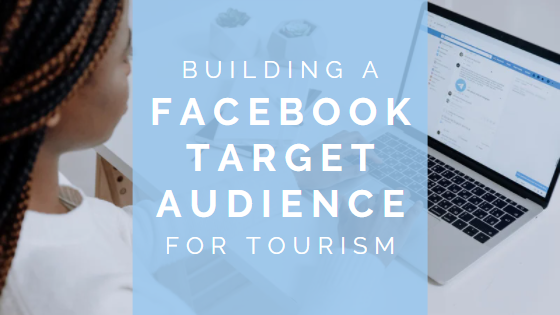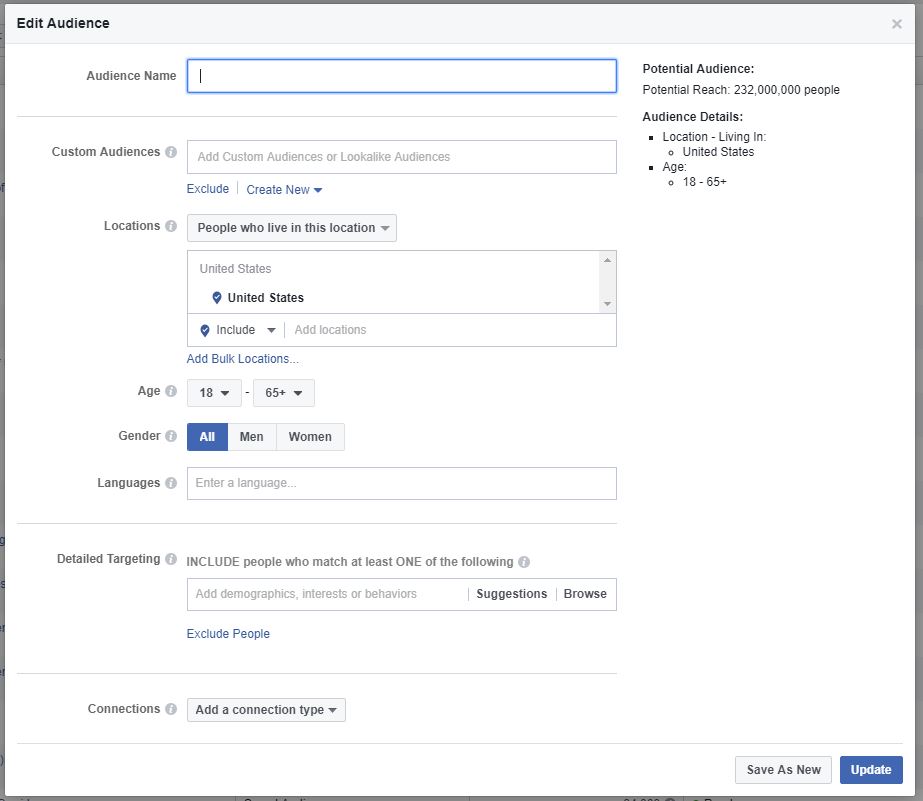Building a Facebook Target Audience for Tourism
Meta’s advertising platform is a powerful tool. It allows us to affordably reach and target people anywhere in the world with ads on Facebook (and Instagram, Whatsapp, etc.). Let’s take a look at how targeting works for ads in Business Manager and how to build a target audience for a travel, tourism or hospitality campaign.

Creating a Target Audience
Creating the target audience is one of the first steps I take when creating a Facebook ad campaign. There are three types of audiences:
- Custom audience
- Lookalike audience
- Saved audience
You can also use more than one of these audiences to create a combination audience. I build many combination audiences, because you can add – or exclude – custom and lookalike audiences from a saved audience. A saved audience is where you’ll add geographic and demographic targeting, as well as Facebook interest targeting (unless you’re targeting a lookalike audience).
Why use interest targeting?
Over the years, I’ve seen a lot of changes in how targeting works for tourism ad campaigns. There are times that a customer list is the best way to target. Like when an attraction has a members-only offer, or when you want to engage people who booked something the prior year in the early part of the season. There are times when it is best to use a Lookalike audience, using the algorithm to extrapolate user data and reach people with similar profiles to your customer list.
Now, it is equally effective in most cases to target using Facebook’s interest and behavior data. Especially if you don’t have a customer list that will be big enough (100-1,000 minimum) or if your customer data isn’t the right niche target for your campaign.
Target Audience Geography & Demographics
You probably already know your target market. You know the regions that people are most likely to visit from, what they like to do, how old they are and a little bit about their lifestyles.
Starting with the geography, we are typically looking to reach a drive market for destinations and attractions. This could be an area with a 1-2 hour drive radius, or 4-6 hours. Many times, we have multiple campaigns running for a destination or attraction, and we are targeting a mix of geographies. Often, this consists of a hyper-local audience in the immediate area, a larger regional or state-wide audience and a maximum drive radius audience including outer markets.
For demographics, consider the target audience’s lifestyle. If we want to reach people with young children for a family-friendly event, we can start by selecting an age range that matches adults who may be in the care of young children. If we want to reach people who are retired or empty nesting and looking to getaway, we would target an age range that is closer to retirement.
Interest Targeting
Interests are the fun part. Our approach is to start with an idea of the target market and begin searching for interests that match or accompany that market’s lifestyle. An audience for outdoor activities might target people who have interests in “the outdoors,” “nature” and “outdoor adventure” as well as “camping,” “hiking” or “kayaking.” As you type, Facebook will fill in relevant options that you can select and add to the audience. Once you add an interest, it will start suggesting more related topics.
You can also target deeper demographic information like lifestyle and behaviors. Wedding venues can target anyone who’s engaged for under a year. Family-friendly events can be targeted to all parents or just parents with kids in a certain age range.
Are there downsides?
Quite a few blogs claim interest targeting isn’t accurate, or that you have to do extensive research in order to build a good audience. That has not been my experience with interest targeted Facebook ads for tourism. With all the ads I’ve run, saved target audiences with interest can be just as effective and successful as a custom or lookalike audience. It’s important to look at what industry these bloggers talking about. Some are more general and some are selling a service, not a tangible product. In tourism, all of the DMOs we work with have a solid idea of who they want to reach. They know who their target audience is and the details needed to target them on Facebook.
Who should I target on Facebook?
Now you’re ready to make a target audience. Think through what you are advertising. What is the objective, and what kind of person is most likely to be interested in what you’re offering? How far will they travel to reach your destination? Where do they live? How old are they? What is your message? Type some keywords related to the ad into the box under Detailed Targeting. To avoid some of the downsides, be as specific as possible. Would any parent have interest in your ad, or just parents with kids younger than teens? If they like shopping, is it antique shopping or bargain shopping or luxury shopping? Is there a competitor similar to you? Type them in to see if they’re included in your interest targeting possibilities. Once you start typing a few interests, Facebook will suggest more. Different variations of an interest keyword can reach different people.
At the end of your audience creation, you should have a estimated reach of over 100,000. Depending on your budget, you can go up to 1 million (for bigger budget or long-running campaigns). Estimated reach is shown on the right sidebar when you are building the audience. When you get to the ads builder and select your saved audience, Facebook will tell you estimated daily reach and estimated results based on your audience size, timing and budget.
Author
Related Posts
What the heck is a Facebook Pixel?
You’ve probably heard of pixels, you may have even heard of Facebook pixels. But what is it, really? A Facebook pixel measures online activities from…

